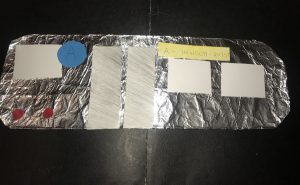Author Archives: Tyne
Site Report 2A Contested Spaces
Blog #3
Blog #2 Re-post
Social Issue: Hazel and Lew
We choose gentrification at Williamsburg, Brooklyn as our social issue. Willaimsburg was not the most desirable neighborhood since it used to be an indurstrial area and where people who couldn’t afford rent would flock to. As the neighborhood is being gentrified the L train along with the buses are not the only means of transportation. The new ferry has now made it easier for Brooklynites to travel to and from Manhattan to Brooklyn. Now the downside of gentrification is how it now forces those who made it a home are now being shuffled to find other placed that are affordable.
Curran, Winifred1. EBSCOhost, doi:10.1080/00420980701373438. Accessed 10 Oct. 2018.
Hymowitz, K. (2017). The new Brooklyn : What it takes to bring a city
https://www.nytimes.com/2011/05/29/nyregion/gentrification-brings-discord-to-williamsburg-brooklyn.html
We feel that this book will highlight how Brooklyn has changed
Blog 1
Tyné Hazel
9/11/18
Lib Arch 2205 ID
Professors Almeida & Swift
In response to readings: van Heeswijk, Franck and Huang; Golan
In their book chapter, “Occupying Public Space, 2011” authors Franck and Huang discuss the adaptive use of public space and use Zuccotti park to describe the concept of negotiated use (p. 16-17).
In response to the readings, I feel as though the international citizens of the world made their opinion loud and clear concerning the topic of public space. “Occupying Public Space, 2011” (Pg. 1) “thousands of people in cities (New York and Barcelona) around the world occupied public spaces in political protest…” “Occupying Public Space, 2011” (Pg. 5) “while virtual communication via social media was essential to the planning and ongoing coordination of the demonstrations, the presence of significant numbers of demonstrators in a single space played in equally important roles particularly for reaching a much large, international audience…” and, “While communicating The public space overtime also requires that demonstrator organizers the space and provision of shelter, food and security… Shown in the images of Zuccotti Park. With the economic crisis, there was a housing social change, Van Heesw ‘The Artist will Have to Decide Who to Serve” (Pg. 2) “shifting geopolitical boundaries and social cultural demographics as a result of global urbanization which creating several local resolutions to the zones of conflict.” Fortunately, a good resolution cams to the light, building shelters with the unused public space. Moving citizens into shelters and supplying them with food and clothing.
How are “cultural interventions” like those described by van Heeswijk potentially used to transform spaces? These cultural interventions will help dwindling places, such as inner cities, in our society mergers with relational “flowing energy.” Redefining the usuals of the place by transforming it. Using the same structures and foundations to create buildings and plazas, etc.




